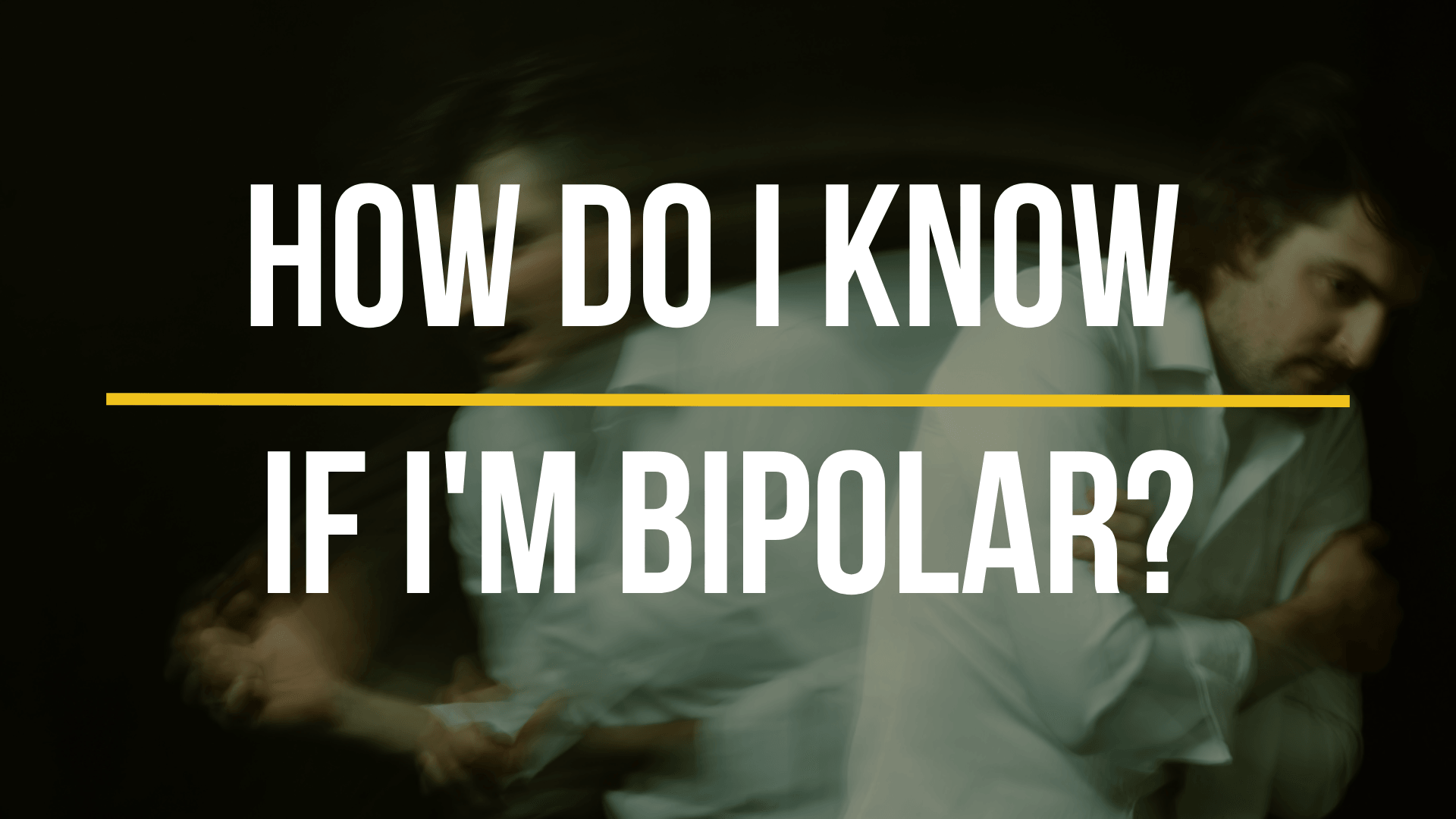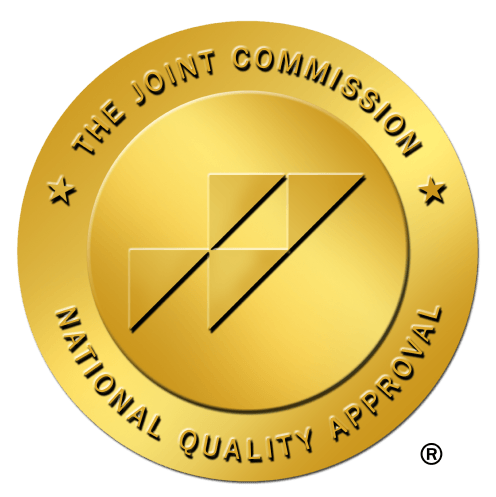How Do I Know If I'm Bipolar?


Discover the signs of bipolar disorder, including manic and depressive episodes, and learn how to identify if you might be bipolar.
Bipolar disorder is a complex mental health condition, known for its extreme mood swings and fluctuations between manic highs and depressive lows. However, feelings of joy and depression are also natural, so how can you tell if you’re bipolar or experiencing emotions in a “normal” way?
There are also three different forms of bipolar disorder, and by knowing the signs and symptoms, you can gain insight into your own behaviors and seek help if needed.
What Are The Major Forms of Bipolar Disorder?
The major forms of bipolar disorder are bipolar I disorder, characterized by manic episodes; bipolar II disorder, involving hypomanic and depressive episodes; and cyclothymic disorder (cyclothymia), marked by periods of hypomanic and depressive symptoms that are less severe. Let’s take a closer look at these forms of bipolar disorder:
Bipolar I
This condition is characterized by the onset of at least one manic episode. You might also encounter hypomanic periods, which are considerably less severe as compared to manic episodes. An individual can also go through an extended time of much calmer mood before facing depression or mania. This kind of bipolar disorder impacts individuals of all genders and sexes equally.
Bipolar II
People with bipolar II come across one significant depressive period that lasts two weeks at minimum. They additionally suffer from at least one hypomanic episode that lasts approximately four days. As per a study by the National Center for Biotechnology Information (NCBI), this form of bipolar disorder might be more prevalent in females.
Cyclothymia
Cyclothymia patients have some signs of depression and hypomania, yet not enough to classify a bout of depression or hypomania. Such periods also have shorter and milder symptoms than those linked with bipolar I or bipolar II disorder. As per the NCBI, the majority of persons with this illness have no mood fluctuations for one to two months at a time.
When talking about your diagnosis, your physician can provide more information regarding the type of bipolar illness you have. Some persons have specific mood symptoms that mimic but do not correspond to the three kinds. If this is the circumstance for you, you may be given the following diagnoses:
Additional bipolar illnesses and associated disorders
Nonspecific bipolar disorder and associated disorders
Recognizing the Symptoms of Bipolar Disorder
Bipolar disorder is marked by distinct mood episodes that can significantly impact your daily life. Let's delve into the specifics of these episodes:
Manic Episodes
Manic episodes are periods of abnormally elevated mood and energy levels. During these times, you might experience:
Increased Energy: You feel an overwhelming surge of energy, often leading to hyperactivity and an inability to stay still.
Euphoria: You may feel an intense sense of happiness or euphoria, far beyond what you would typically feel.
Risky Behavior: This can include impulsive actions like excessive spending, reckless driving, or engaging in dangerous activities without considering the consequences.
Decreased Need for Sleep: Despite sleeping very little, you still feel unusually energetic.
Rapid Speech and Racing Thoughts: You might talk quickly, jump from one idea to another, and have trouble focusing.
Depressive Episodes
On the other hand, depressive episodes are characterized by prolonged periods of low mood and energy. Symptoms can include:
Prolonged Sadness: You feel a deep, pervasive sadness or emptiness that doesn't seem to go away.
Fatigue: You feel constantly tired and lack the energy to engage in your usual activities.
Hopelessness: You may experience feelings of worthlessness, guilt, or hopelessness about the future.
Changes in Sleep and Appetite: This can manifest as sleeping too much or too little, and changes in appetite, leading to weight gain or loss.
Loss of Interest: You lose interest in activities you once enjoyed, feeling indifferent or disengaged.
Mixed Episodes and Rapid Cycling
Some individuals experience mixed episodes, where symptoms of both mania and depression occur simultaneously. This can be particularly confusing and distressing, as you might feel agitated and energized while also feeling hopeless and sad.
Rapid cycling refers to experiencing four or more mood episodes (manic, hypomanic, or depressive) within a year. This pattern can make it challenging to maintain stability and can significantly disrupt your life.
Recognizing these symptoms is essential in seeking the right help and support. If you identify with these experiences, it's crucial to consult a mental health professional for an accurate diagnosis and appropriate treatment.
Are You Struggling with Mental Health or Addiction?
We Can Help. Call Us Now!
CALL: 877-839-1772
Understanding Hypomania and Mania
Emotional highs are frequently associated with manic episodes. You might experience euphoria, impulsivity, excitement, and a surge of energy. Additionally, you can have jitters or realize that your mind is racing. Some patients even report having hallucinations and other psychotic symptoms.
During episodes of mania, you might act more spontaneously than usual owing to the invincible feeling inside you. Some examples of this behavior include:
Having intercourse without using protection
Spending a questionable amount of money on unnecessary items
Misusing drugs and alcohol
However, there are other ways in which impulsivity might manifest, such as:
Unexpectedly leaving your job
Making a large investment in the spur of the moment
Driving significantly faster than usual, over the speed limit
Taking on an expedition or road trip without informing anyone
Taking part in extreme or risky sports that you wouldn’t normally consider
The primary contributor to mania is that these are not actions you would take part in during times of stable mood, with emotional highs driving you to go to extremes.
The majority of hypomanic indications, which are generally related to bipolar II disorder, are identical but less severe. Unlike mania, hypomania may not have as severe of effects on your professional life, relationships, or academic performance, as hypomanic episodes don't entail psychosis. They frequently don't carry on as long as episodes of mania, or necessitate hospitalization.
You might feel highly productive and motivated when you suffer from hypomania. Still, you may not recognize additional shifts in your temper. Even those who don't know you well might not. The ones who are most connected to you, though, will repeatedly observe any transformations in your mood and behavior.
What Are Episodes of Major Depression?
A low mood can make you feel unmotivated, sad, and lazy. The episodes of major depression that are concerned with bipolar disorder will include at least five of these below-mentioned signs.
Suicidal or death-related ideas
Lack of energy
Sudden changes in weight and appetite
Bouts of too much or too little sleep
Trouble focusing, making decisions, and concentrating
Lack of interest in hobbies and activities that we once enjoyable
A feeling of worthlessness or guilt
Feeling weaker than normal or having ongoing restlessness
An extended phase of depression characterized by extreme hopelessness, sadness, or emptiness
Although many patients with this condition endure major depressive episodes, the NCBI makes it clear that not everyone has the same experience. Based on the form of bipolar disorder you have, you might have a few depressive symptoms, but meeting all five isn’t required for a major episode.
It’s also crucial to note that the thrill or exhilaration caused by mania can rarely feel delightful. After attaining treatment for mania, the no-symptom emotions and feelings you encounter may resemble a depressive episode or a "low" mood rather than a more usual state of mood.
Are You Struggling with Mental Health or Addiction?
We Can Help. Call Us Now!
CALL: 877-839-1772
Symptoms of Bipolar Disorder in Men Vs. Women
Bipolar disorder manifests differently in men and women, with notable variations in symptoms and onset. Men typically experience their first episode of bipolar disorder earlier than women, for example, often presenting with manic episodes. They’re also more likely to exhibit symptoms such as increased energy, euphoria, and impulsive behavior.
In contrast, women are more prone to depressive episodes, characterized by feelings of sadness, hopelessness, and fatigue. Women are also more likely to experience rapid cycling, where they have four or more mood episodes within a year, and are more susceptible to co-occurring conditions like anxiety and eating disorders.
Additionally, men with bipolar disorder are more likely to have substance use disorders and conduct issues, while women may face higher rates of thyroid disease and obesity. These gender-specific differences highlight the importance of tailored treatment approaches to effectively manage bipolar disorder in men and women. Understanding these distinctions can lead to better diagnosis and personalized care, ultimately improving outcomes for individuals with bipolar disorder.
Bipolar Disorder in Teenagers and Children
In teenagers and children, the symptoms of bipolar disorder can sometimes be mistaken for normal ups and downs, making it challenging to diagnose. Early diagnosis and treatment are crucial as they can help manage the symptoms and improve the quality of life for the affected individuals. Treatment for bipolar disorder in young people often involves a combination of medication and psychotherapy. Medications such as mood stabilizers and antipsychotics can help control the mood swings, while psychotherapy can provide support and strategies to cope with the condition.
Are You Struggling with Mental Health or Addiction?
We Can Help. Call Us Now!
CALL: 877-839-1772
Treatment for Bipolar Disorder
Treatment for bipolar disorder typically involves a combination of medication and psychotherapy to manage symptoms and improve quality of life. Medications such as mood stabilizers, antipsychotics, and antidepressants are commonly prescribed to help control mood swings and prevent episodes of mania and depression. It’s important for individuals to work closely with their healthcare providers to find the right medication and dosage, as this can vary from person to person.
Psychotherapy, including cognitive-behavioral therapy (CBT) and family-focused therapy, plays a crucial role in treating bipolar disorder. These therapies can help individuals understand their condition, develop coping strategies, and improve their relationships. Additionally, lifestyle changes such as maintaining a regular sleep schedule, exercising, and avoiding alcohol and drugs can support overall treatment. With a comprehensive treatment plan, many people with bipolar disorder can lead stable and fulfilling lives.
Are You Bipolar? We Can Help With Diagnosis and Treatment.
If you recognize these symptoms in yourself, seeking professional help is a vital next step. Understanding and managing bipolar disorder can be challenging, but you don’t have to do it alone.
At the Forge Recovery Center, we’re dedicated to providing the support and treatment you need to navigate your mental health journey. Our compassionate team is here to help you achieve stability and reclaim your life. Reach out to us today, and take the first step towards understanding and managing your bipolar disorder effectively.
Are You Struggling with Mental Health or Addiction?
We Can Help. Call Us Now!
CALL: 877-839-1772





